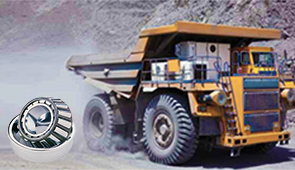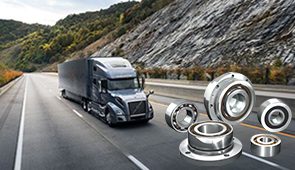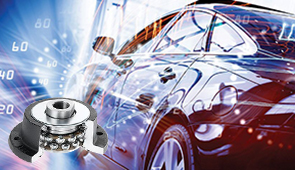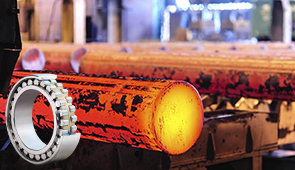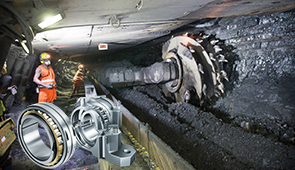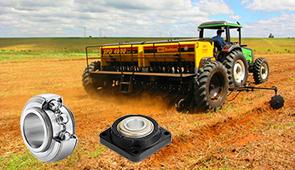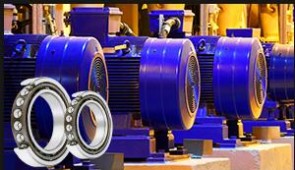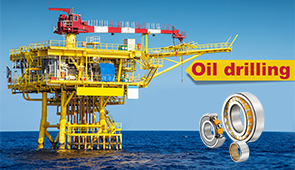Exploring the Advantages of Roller Bearing Technology
Roller bearing technology has revolutionized modern engineering by offering a reliable solution for reducing friction and enabling smooth rotational or linear movement in machinery. From heavy industrial applications to precision equipment, roller bearings are critical components that ensure efficiency, durability, and optimal performance. This article dives deep into the advantages of roller bearing technology, exploring its design principles, applications, and its impact across various industries. Whether you’re an engineer, a technician, or simply someone curious about the mechanics behind modern innovation, this guide will provide valuable insights into why roller bearings are fundamental to advancing mechanical systems worldwide.
What is a Roller Bearing and How Does it Work?
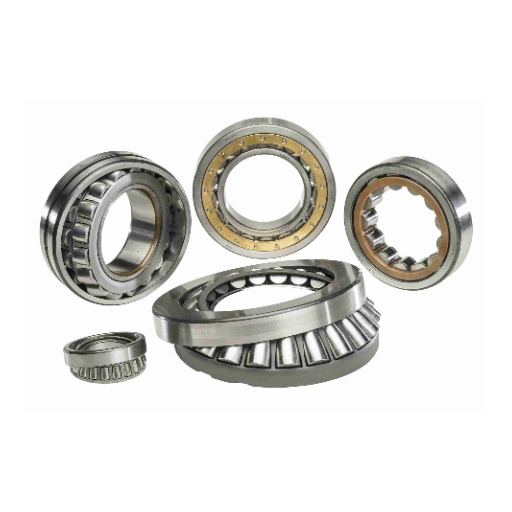
Understanding the Roller Mechanism
A roller bearing is a type of bearing that employs rolling elements, usually cylindrical, tapered, or spherical rollers, to decrease friction and enable smoother rotational or linear movement between two surfaces. Unlike the plain bearings, which depend on sliding motion, roller bearings use the rolling motion on shaft bearings which helps further reduce energy wastage and frictional wear. The fundamental principle of roller bearings is to reduce the interfacing surface to a set of points or lines so that the friction resulting from contact is less than that obtained in flat surface contact.
The primary working mechanism of a roller bearing involves rollers located between an inner ring (shaft) and an outer ring (housing). With the application of the load, the rollers spread the force evenly over the surface, which balanced and controlled motion, together with rotation accuracy. This design permits roller bearings to support both radial loads, which are perpendicular to the axis of rotation, and also axial loads, which are parallel to the axis of rotation. This capability to sustain dual loads simultaneously increases the versatility of these types of bearings in various mechanical operations.
Specific attributes of a roller bearing are high load bearing capacity, efficiency under varying speeds, and durability under harsh conditions. These bearings are used in various industries such as automotive, aerospace, construction, and manufacturing, where smooth and effective mechanical movement is crucial.
Components of a Rolling Bearing
Rolling bearings are specific machine parts that facilitate rotational or linear movement while reducing friction.
- Inner Ring: The rolling elements are raceways as the inner ring rotates. It is also referred to as the shaft-mountable outer ring. The inner surface of the inner ring must be polished to maximize functionality.
- Outer Ring: This unit holds the element and fits externally on the outer ring’s sides. It ensures load rolling transmission. The outer ring must have suitable materials and strength to endure environmental factors and operating conditions.
- Rolling Elements: The rolling elements are geometrically formed to perpendicularly support the load and transmission between the outer and inner rings. Usually, the substances used are variable in number and size, and material, which is frequently leased with a rigid spear or ceramic bearing of superior quality.
- Cage: The cage or separator maintains the rolling components within a bearing in a spaced arrangement that inhibits contact with other rolling components during operation. Furthermore, this part is crucial for the uniform circulation, cross-thoracic, and mechanical equilibrium.
- Seals or Shields: Seals and shields are used to prevent the penetration of contaminants such as dirt, dust, and moisture, protecting the bearing’s life. In addition, they help in trapping the lubricant within the housing, which is vital for operational efficiency.
- Lubrication: Although a bearing does not consist of a particular element called lubrication, it is very important concerning friction, heat, wear, and corrosion. Lubrication can be in the form of oil or grease, depending on the use. Quantities should always be in the correct amount so as to perform best.
Each of these elements was manufactured with great care to the multidisciplinary dictates of materials, mechanical systems, and bearing engineering aimed at ensuring warranty and lifetime, thus revealing the symbiotic relationship between material science, mechanical engineering design, and specific application features of some requirements.
Advantages Over Other Types of Roller Bearings
Spherical roller bearings have a distinct competitive edge over other forms of roller bearings due to their self-aligning features. The self-aligning feature enables spherical roller bearings to manage misalignments resulting from shaft deflections or mounting inaccuracies without system strain. They are the most reliable option for highly loaded applications because they can carry radial and axial loads in both directions simultaneously.
Spherical Roller Bearings wear down more slowly than other types of roller bearings because of their use of heat-treated materials, more sophisticated internal geometries, as well as high precision manufacturing. These specific properties guarantee dependable functionality even in harsh conditions like fluctuating speeds, strong vibrations, and dirty operating environments. When looking at the operational life compared to cylindrical and tapered roller bearings, spherical roller bearings significantly outlast other types, minimizing the operational and maintenance downtimes.
The efficiency and energy loss of spherical roller bearings are intensified due to modern lubrication methods and sealing technologies. As a result, they can be used in industries such as construction and heavy machinery, mining, power generation, and ship propulsion systems. Their adaptability and strength improve operational reliability, which is important in engineering, where efficient and durable parts are increasingly needed.
How Do Spherical Roller Bearings Differ from Other Types?
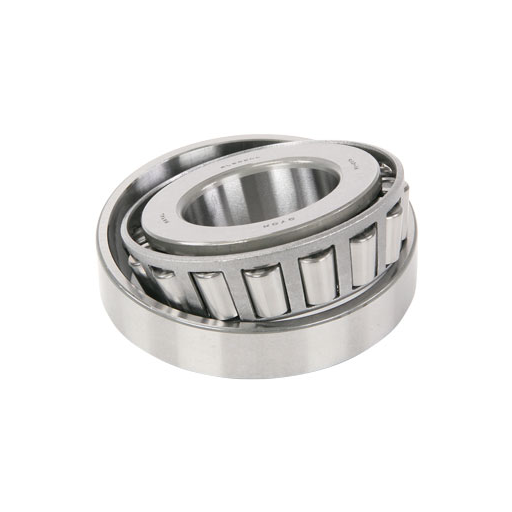
The Unique Design of Spherical Roller Bearings
Spherical roller bearings are uniquely designed to handle high radial and axial loads while still performing well in extreme situations like misalignment or deflected shafts. What sets them apart is the spherical outer ring raceway, which allows self-alignment and the ability to have some angular movement between the shaft and the housing without losing functionality.
Usually, these bearings have two rows of rollers angled to the bearing axis with strong cages that evenly distribute the load to prevent roller skewing. This design helps reduce friction while allowing the bearing to handle vibrations and other spinning forces. Also, optimized inner shapes along with hardened races greatly reduce wear in even the most demanding conditions, which extends service life.
Advances in material science and surface coatings have further improved spherical roller bearings. For example, special heat treatments together with high-precision machining help improve fatigue resistance, and new lubrication systems ensure reliable performance with lower operational temperatures. Their strength, alongside flexible alignment and ability to handle heavy loads, makes spherical roller bearings critical parts in industrial automation, renewable energy, and construction infrastructure.
Applications and Uses of Spherical Roller Bearings
Due to misalignment, high radial and axial loads, industrial and engineering applications rely heavily on spherical roller bearings because of the functionality they provide. They are extensively used in high-load industries such as mining, where they take care of crucial machinery like conveyor belts, crushers, and vibrating screens. All this support equipment is used under extreme environmental conditions. Moreover, these bearings also play an important role in the energy sector, especially in wind turbines, as they make sure that loads during rotation or oscillation are smooth and balanced.
Pivotal use of spherical roller bearings can also be seen in industrial automation. Robotics, automated assembly lines, material handling equipment, and simulation demand highly accurate parts, which require these spherical roller bearings. Their effectiveness in sustaining equipment life, minimizing downtime, and increasing operational efficiency, alongside lowering maintenance costs compared to other bearing types.
Additionally, spherical roller bearings are used in the signaling and transport infrastructure, like railway axle boxes, bridges with expansion joints, and in some cases, even in locomotives. Their construction absorbs distortion in the direction of the load and also in the deflection of the shaft, to avoid wear and tear and breakdown of the machine parts. Improvements in the bearing aides lubricants technology and braking materials, and servicing of the system enable these bearings to be used effectively in all movements, even where the forces are overextended, within high altitudes, and when the surrounding temperature changes.
Comparing Spherical with Cylindrical Roller Bearings
Both spherical roller bearings and cylindrical roller bearings are used in heavy-duty engineering works. However, both of them differ in their designs and performance outcomes. Spherical roller bearings can tolerate shaft and housing misalignment, which makes them very useful where shaft deflections or considerable loads are present. They self-align and thus reliably eliminate uneven load application, which would result in costly failures in dynamic, misaligned, or shifting environments. This protects against premature failure, making them suited for mining, shipbuilding, and paper processing industries where operational parameters are volatile.
Cylindrical roller bearings are designed for high precision and high radial load applications. With line contact between the rollers and raceways, these bearings generate the lowest friction and heat of all bearing types, a vital asset for high-speed machinery. Unlike spherical roller bearings, these bearings do not self-align, which means exact shaft alignment must be provided for them to work. These bearings can be found in electric motors, turbines, and gearboxes where high rigidity and stability are needed.
In demanding environments, spherical roller bearings typically outperform other types due to their tolerance for axial loads and their ability to compensate for angular misalignment. For high-speed applications, cylindrical roller bearings are best due to their lower friction coefficients, providing superior radial load support. The choice between spherical and cylindrical bearings should consider environmental stresses, alignment tolerances, and application speed.
Understanding Tapered Roller Bearings
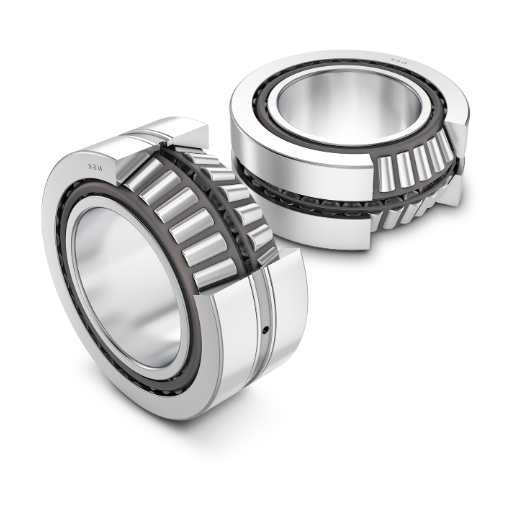
What is a Tapered Roller Bearing?
Tapered roller bearings belong to the wider family of rolling-element bearings, which can accommodate both thrust (axial) and radial loads simultaneously. A tapered roller bearing’s unique characteristic comprises the taper of the internal and external races’ grooves as well as the taper of the rollers themselves. This geometry allows the bearing to reasonably manage combination loads, meaning the bearing can support forces acting in several ways simultaneously, like rotational and thrust.
Tapered roller bearings are usually made up of a cone (inner race), a cup (outer race), rollers, and a cage that spaces the rollers equally. These tapered roller bearings have parts that work together to redistribute stress across the bearing, reducing operational life. The design also allows for self-alignment of the bearing during high load conditions, which is advantageous for heavy-duty applications such as automotive wheels and axles, gearboxes, industrial machinery, and railway systems.
Some modern approaches go beyond basic designs and include grade engineering to reduce friction and wear to allow steel and oil to function efficiently. The angle of the rollers guarantees that the point of contact with the raceways is a line that leads to reduced heat generation and high operational efficiency in demanding applications.
Benefits of Using Tapered Roller Bearings
Tapered roller bearings are critically important in heavy-duty applications due to the technical advantages they offer. One of the key characteristics is the handling of radial and thrust loads at the same time. The design makes it possible to distribute the load at a given time through the rolling elements, which lowers stress concentration. This improves the load-carrying capacity as well as the durability of the bearing even under extreme pressure.
Another important benefit of tapered roller bearings is the recovery from angular misalignment tolerances. Frictional losses are minimal for any level of misalignment. Engineering tolerances and the use of advanced materials, coupled with the best heat-treatment techniques, greatly improve service life in hostile environments. These may consist of high rotational speeds, contamination, or vibrations.
The modular construction of tapered roller bearings also makes them easy to adapt to the specific requirements of the application, such as optimized contact angles and pre-load values. Such flexibility guarantees their usage in many machines and systems, which enhances overall operational effectiveness. With modern lubrication methods, these bearings greatly withstand thermal stress, which minimizes maintenance intervals and avoids breakdowns in rotation-controlled systems.
As compared to other types of bearings, tapered roller bearings increase energy efficiency because of their design that reduces lost energy due to friction. This means that the amount of power machinery uses is reduced, which meets the goals for sustainable development and cost saving, which is increasingly important in the industry. The dependability of tapered roller bearings in demanding processes has made them the number one selection in automotive, aerospace, and heavy manufacturing industries.
What Makes Needle Roller Bearings Unique?
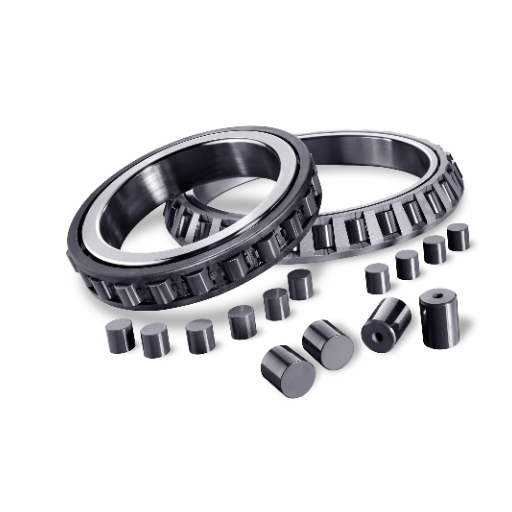
The Structure of Needle Roller Bearings
The defining feature of needle roller bearings is the long, slender cylindrical rollers, which often exceed their width in length. This structural feature provides these bearings with the ability to maintain significant radial loads while being compact, low profile, and lightweight. The guide assembly or outer ring portion of the needle roller bearing cage assists in retaining, aligning rollers, and preventing misalignment.
Needle roller bearings can be either of an open design or a closed design, built with either a full complement of rollers or a caged needle configuration. The full complement type is optimized for load-bearing performance but suffers during high-speed operations due to increased frictional heat. The caged design, however, smoother operation due to lesser roller-to-roller friction. Needle bearings can include an inner race or rest directly on hardened shafts, depending on machine tolerances, space-saving design parameters, and design intention.
Steel rollers are usually made of high-carbon chromium steel, which makes them possible to endure challenging working conditions, as the operating environments are harsh. To improve the corrosion resistance, wear, and useful life of the parts, advanced surface treatments and coatings are usually added. They can efficiently tackle extreme conditions while maintaining structural flexibility and are mainly used in car transmissions, industrial gearboxes, and construction machines that require compactness and reliability.
Advantages of Needle Roller Designs
Needle roller bearings are essential to many engineering applications for their multiple distinct features. Their compact design enhances the load-carrying capacity relative to their size. This contributes to space saving in compact machines. This is beneficial in scenarios where weight reduction and strength maximization are required.
Also, needle roller bearings are superior at handling radial load because their shape permits the elongation of cylindrical rollers, which promotes even load distribution at contact surfaces. This elongation reduces local stress areas, which minimizes wear and extends operational life. Furthermore, smoother movement and an increase in energy efficiency are enabled by the relatively low friction of the bearing, which is important in high-speed applications.
Advanced manufacturing techniques such as precision machining and lubrication technology further improve operational factors. For example, using advanced heat-treated materials with polymer cages allows the performance at high temperatures and mechanical stress to be guaranteed. These properties make them reliable across many industries, such as aerospace and construction, where precision and durability are critical.
Applications for Needle Roller Bearings
Needle roller bearings are used in places where there is a need for a compact size and high load capacity.. Due to their accuracy and precision, they can be utilized in other sectors. In automotive engineering, for example, they are placed in transmissions and differentials, as well as in rocker arm pivots. The bearings’ ability to accommodate significant radial loads in restricted spaces is advantageous for applications where size and weight are crucial.
In the aerospace field, needle roller bearings are also used to equip turbines and actuators since they are operated at high temperatures, under vibrations, and severe movements. In the same manner, the bearings support high-load, low-speed shafts and rollers in heavy machinery and construction equipment, serving with low frictional power losses, or high efficiency and equipment longevity.
Other applications are medical device production, where the needle roller bearings allow for the motion of rotary and imaging tools, which require precision. Their small shape means the device can be more compact. They are also used in industrial robotics to improve the precision and stability of components, ensuring smooth operation of automated systems.
These applications showcase the critical function of needle roller bearings in industries that require dependability, longevity, and efficiency in strenuous operational conditions.
Why Choose Cylindrical Roller Bearings for High Load Applications?
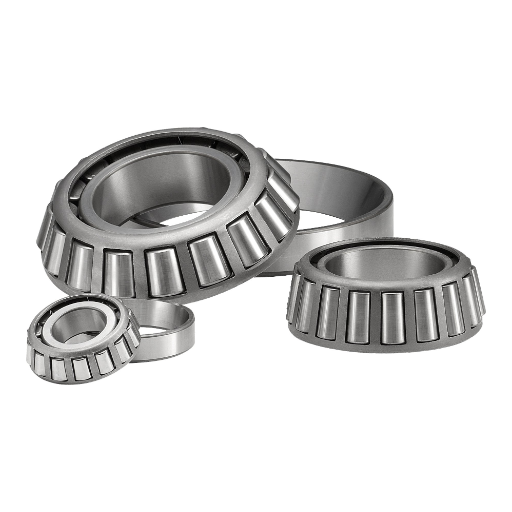
Features of Cylindrical Roller Bearings
Designed for demanding applications, cylindrical roller bearings efficiently manage radial loads. Their rolling elements are cylindrical, which maximizes raceway contact, thus load distribution is made uniform while the concentration of stresses is reduced. This design enhances the load-carrying capacity of the bearing as compared to other types of bearings.
Other key characteristics important in the bearing include accommodation for axial displacement, which is critical in applications where shafts contract or expand due to temperature changes. Also, they come in single, double, and multi-row designs, which makes them customizable to specific operational needs. For instance, single-row cylindrical roller bearings have very high speeds of rotation with low friction, and multi-row variants have an even greater capacity for radial loads.
Cylindrical roller bearings are manufactured using high-performance materials like case-hardened and stainless steel, increasing the durability, wear resistance, and performance of the roller bearings in extreme operating conditions. Some other models have a cage made of polyamide, brass, or steel, which improves lubrication retention and reduces noise during operation.
The performance of these bearings has also been improved by innovations such as low-friction seals and advanced surface treatments, which reduce energy loss and increase service life. Cylindrical roller bearings used in power generation, gearboxes, railways, and heavy machinery provide reliable performance and efficiency in heavily loaded, high-speed applications.
Handling Heavy Loads with Cylindrical Designs
Cylindrical roller bearings are designed with linear contact between rolling elements and raceway, which improves load-bearing capacity. This design has radial load distribution advantages as weight is balanced evenly throughout the bearing. There is no flange-guided roller end, providing minimal axial stress and therefore, permitting greater speed of operation with lower friction.
More advanced engineering materials, such as through and case-hardened steel, increase durability and fatigue starting under continuous stress, hence are commonly used in bearings. Wear and failure due to premature stress concentration are mitigated with precise manufacturing, as optimal alignment reduces localized tension.
Heat and load distribution have been integrated into newer modern cylindrical roller bearings. Furthermore, roller skewing at high speeds is prevented with polyamide and brass reinforcements due to their stability under heavy loads. That said, robust materials coupled with efficient design ensure reliable operation across various sectors.
Evidence of the effectiveness of cylindrical roller bearings in extreme applications can be observed in industrial sectors like mining, construction, and renewable energy. These bearings can withstand radial loads of multiple tons while continuing to function, which is critical in many heavy-duty applications. Ongoing innovation in these bearings has enabled their wide use in the newer designs of energy-saving and high-efficiency machinery.
Optimizing Bearing Life with Proper Maintenance
The use and operational life span of cylindrical roller bearings is directly related to robust maintenance strategies. Lubrication is critical as a non-existent, contaminated, or insufficient lubricant will increase friction, which will, in turn, lead to wear and degradation. In addition, the lubricant type must be chosen depending on the load, temperature, and speed to ensure the formation of a protective film to minimize metal contact. Also, upholding cleanliness during the placement and operation is very important since dirty components can cause particulate surface wear, which will weaken the bearing’s strength.
Tangible condition monitoring, such as vibration and thermal imaging, provides a means to detect wear, misalignment, and imbalance before these issues lead to failure. Moreover, joints should be routinely checked for damage due to pitting, scoring, or discoloration indicative of overheating. Further enhancement in the accuracy of diagnostics and promotion of preemptive action are achievable through the application of advanced maintenance tools like ultrasonic detectors.
Lastly, these align with the need to focus on the bearing life span through proper handling and storage, as controlled temperature needs to be maintained free of humidity, corrosion, and moisture-inducing agents. Implementing these methodologies alongside the application of real-time condition monitoring smart sensors, operators can maximize machine uptime and extend bearing life in critical operations.
Frequently Asked Questions (FAQ)
Q: What are the primary advantages of roller bearing technology?
A: Roller bearing technology offers several advantages, including the ability to handle higher loads than ball bearings, suitability for high speeds, and better performance under heavy radial and shock loads. Roller bearings can carry dynamic loads and moment loads effectively, making them ideal for a variety of applications.
Q: How do roller bearings compare to ball bearings in terms of load capacity?
A: Roller bearings generally have a higher radial load capacity and can handle higher loads than ball bearings. This is due to the larger contact area between the rolling elements and the bearing races, which distributes the load over a wider area.
Q: What types of roller bearings are available in the market?
A: There is a comprehensive range of roller bearings available, including cylindrical, tapered, and conical designs. Each type is suited for different applications, with various sizes and load ratings to meet specific requirements.
Q: What are the key components of a roller bearing?
A: The key components of a roller bearing include the inner and outer races, rolling elements (such as cylinders), the cage assembly, and sometimes a bearing cone. Each part plays a crucial role in ensuring smooth operation and load distribution.
Q: Can roller bearings be used for linear motion applications?
A: Yes, roller bearings that allow for linear motion are available. These bearings are typically designed to handle heavy loads and provide smooth and precise linear movement, making them ideal for applications such as machine tools and other precision equipment.
Q: How do shock loads affect roller bearings?
A: Roller bearings are designed to handle shock loads better than ball bearings, due to their ability to distribute loads evenly across the rolling elements. This makes them suitable for applications where sudden or heavy impacts may occur.
Q: Are there metric-sized roller bearings available?
A: Yes, metric-sized roller bearings are widely available, providing compatibility with international standards and making them suitable for a variety of global industrial applications.
UCTH213-40J-300 with Setscrew(inch)
CNSORDERNO: Normal-duty(2)
TOGN: UCTH213-40J-300
SDI: B-R1/8
SD: 2 1/2
UCTH212-39J-300 with Setscrew(inch)
CNSORDERNO: Normal-duty(2)
TOGN: UCTH212-39J-300
SDI: B-R1/8
SD: 2 7/16
UCTH212-38J-300 with Setscrew(inch)
CNSORDERNO: Normal-duty(2)
TOGN: UCTH212-38J-300
SDI: B-R1/8
SD: 2 3/8
UCTH212-36J-300 with Setscrew(inch)
CNSORDERNO: Normal-duty(2)
TOGN: UCTH212-36J-300
SDI: B-R1/8
SD: 2 1/4
UCTH211-35J-300 with Setscrew(inch)
CNSORDERNO: Normal-duty(2)
TOGN: UCTH211-35J-300
SDI: B-R1/8
SD: 2 3/16
UCTH211-34J-300 with Setscrew(inch)
CNSORDERNO: Normal-duty(2)
TOGN: UCTH211-34J-300
SDI: B-R1/8
SD: 2 1/8









